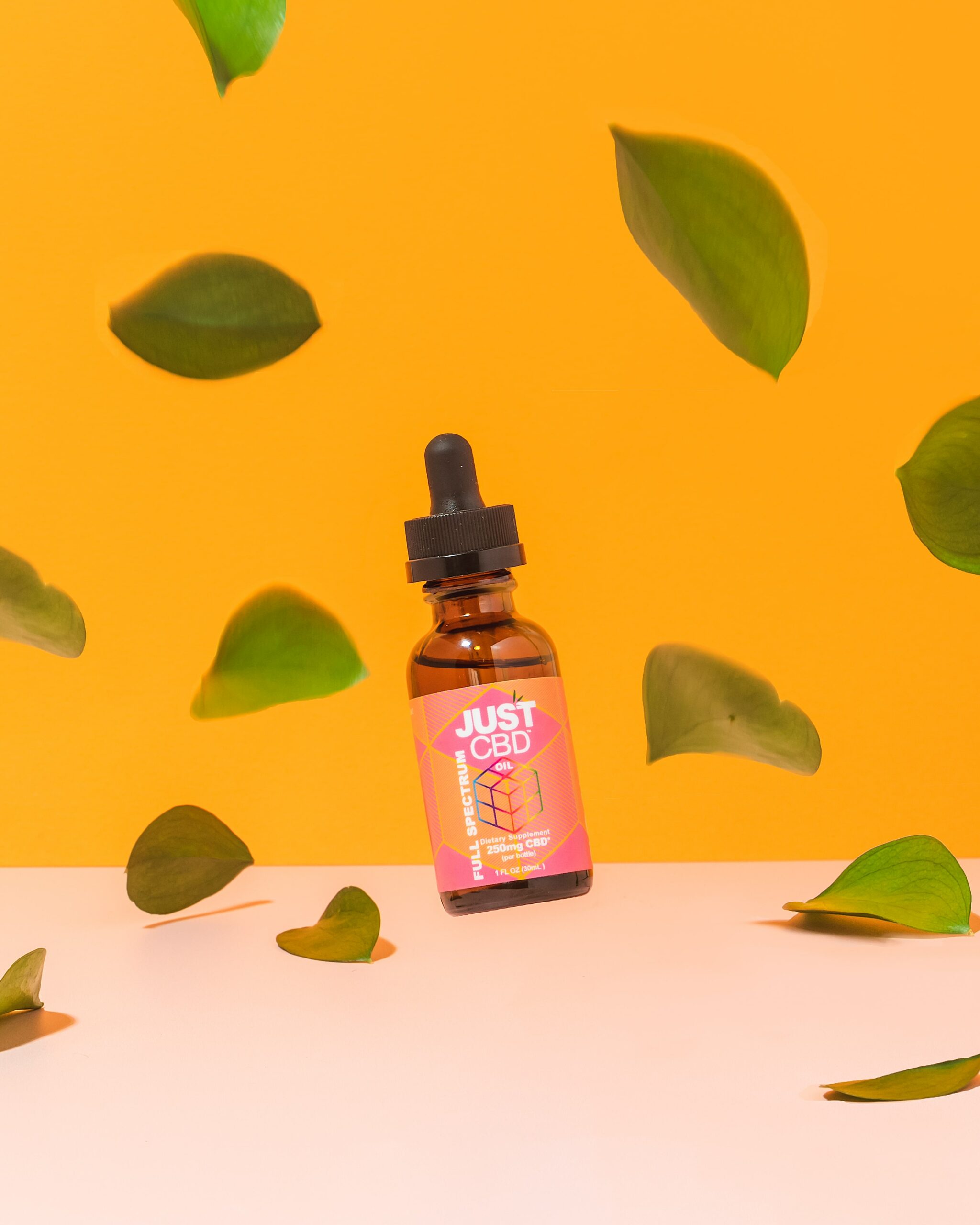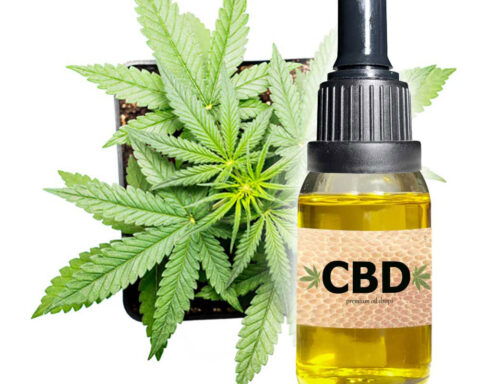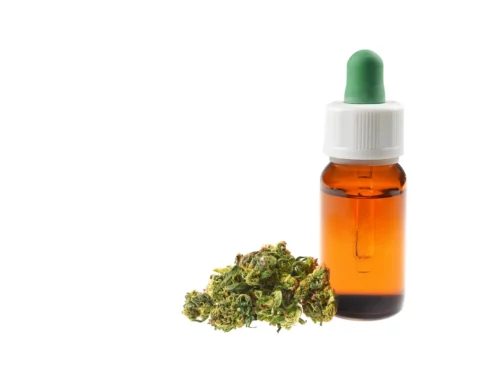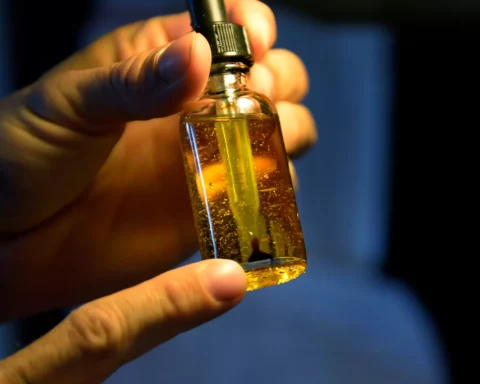The cannabis plant contains elements associated with various wellness concerns, such as enhancing sleep and reducing pain and anxiety. Organic elements in cannabis include cannabidiol (CBD), tetrahydrocannabinol (THC), terpenes, and flavonoids. CBD products include gummies, capsules, oil, tinctures, and edibles. These products are offered in isolate, broad-spectrum, and full-spectrum formulation. Various research tries to prove the impact of each element found in the cannabis plant on the human body. During the legalization of hemp-based products within the USA in the 2018 Farm Bill, only CBD products containing less than 0.3% THC levels were decriminalized.
Different Types of CBD
Since the legalization of hemp products in 2018, over 150 CBD products manufacturers have emerged in the USA. CBD products are also manufactured in different concentrations, types, and formulations.
Full-Spectrum CBD Oil
Full-spectrum CBD oil is manufactured using all elements of the cannabis plant including CBD, THC, terpenes, and flavonoids. These elements have various functions as discussed below.
Cannabinoids (CBD)
There are over 100 cannabinoids. The two primary elements found in the hemp plant include CBD and THC. Unlike THC, Research by Cameron, et al. (2014) linked CBD to wellness impacts by minimizing pain, anxiety, and stress. Although some research on CBD products links cannabinoids to therapeutic and psychoactive effects, more clinical evidence needs to be provided. Various health institutions, including the World Health Organization, have recognized the benefits and side effects of the cannabis plant. Some of the side effects of using overdosing on CBD oil include diarrhea, red eyes, and dizziness. However, CBD poses fewer threats compared to THC.
THC
THC is also a primary element found in the cannabis plant. THC is responsible for the intoxicating and high impact of taking CBD oil. Although the significance of the cannabis plant was established in the early 90s, it was legalized in 2018. When the products were legalized, the Food and Drugs Administration (FDA) was mandated to ensure only CBD products containing less than 0.3% of THC were allowed in the market.
Terpenes
Although taking full-spectrum CBD will expose your body to the side effects of THC, you will also benefit from terpenes which are associated with multiple wellness benefits. The cannabis plant contains over 150 terpenes. According to de Santana et al. (2014), terpenes have anti-inflammatory effects. They are also responsible for the smell of the cannabis plant rather than CBD products. Most CBD manufacturers offering topical products to enhance muscle relaxation consider using full-spectrum CBD.
Flavonoids
THC, CBD, and terpenes are only found in the cannabis plant. Unlike the three elements, flavonoids are available in fruits, vegetables, and grains. A study by Kris-Etherton, et al. (2004) shows that they have similar properties as terpenes; anti-inflammatory. The cannabis plant contains 20 flavonoids, which positively impact our bodies.
Broad Spectrum CBD
Broad-spectrum CBD is closely related to full-spectrum CBD. It contains all useful elements of the hemp plant except THC. Most experts recommend broad-spectrum CBD oil to people who wish to benefit from all the elements of the hemp plant and avoid the side effects of THC. This formulation minimizes the contamination risk because most broad-spectrum CBD products offer it in natural flavor. The lack of THC in broad-spectrum differentiates it from full-spectrum CBD oil.
Isolate CBD
Isolate CBD is the pure form of CBD oil. It is void of all other elements of the cannabis plant, including flavonoids, terpenes, and THC. Most people who wish to gain from CBD only are recommended to take Isolate CBD. It also minimizes the side effects of THC found in the full spectrum. Most brands offering their products in isolate form don’t add additives or flavors to maintain the natural state of CBD.
How To Choose the Best CBD Oil
Although various CBD brands offer various products such as topicals, tinctures, vapes, capsules, and gummies in either of the three types of CBD, quality remains a big concern. Therefore, consider the following factors while buying any CBD oil;
The Lab Results
Due to the common trend of misinformation on wrong potency levels in CBD products, pay attention to lab results. However, confirm the company is using a reputable, independent IOS 9001 certified lab. Although public labs have been certified, they often offer inaccurate results. Also, ensure the brand has posted a COA report on its website for pre-purchase verification. Consider a brand offering QR codes on each product to help you affirm specific lab reports of the products. Also, ascertain the THC levels don’t exceed 0.3%, and CBD variance is within the 10% limit as set by FDA to avoid overdose and side effects of THC.
The Concentration
Use a considerable concentration that will be of benefit rather than harm. There is no specific concentration attached to the yielding effect. If you are a veteran, you might need higher concentration than usual to yield effect. Novices are advised to take lower concentrations since their body will be triggered with the slightest concentration of up to 10 mg as a foreign substance is absorbed into the body.
Conclusion
The type of CBD oil you go for depends on the purpose. Various research recommends either of the three for different use. However, although you can benefit from all the elements of the cannabis plant found in full-spectrum, it will expose you to the intoxication impact caused by THC. Broad-spectrum is ideal because it contains all the useful elements of the hemp plant except THC. Therefore, you can benefit from terpenes and flavonoids and avoid the effects of THC. However, not all isolate and broad-spectrum CBD lacks THC completely since it’s a primary element found in cannabis; extracting it fully might be difficult.
References
Cameron, C., Watson, D., & Robinson, J. (2014). Use Of A Synthetic Cannabinoid In A Correctional Population For Posttraumatic Stress Disorder–Related Insomnia And Nightmares, Chronic Pain, Harm Reduction, And Other Indications: A Retrospective Evaluation. Journal Of Clinical Psychopharmacology, 34(5), 559.
De Santana Souza, M. T., Almeida,
J. R. G. D. S., De Souza Araujo, A. A., Duarte, M. C., Gelain, D. P., Moreira, J.
C. F., … & Quintans‐Júnior,
L. J. (2014). Structure–Activity Relationship Of Terpenes
With Anti‐Inflammatory Profile–A
Systematic Review. Basic & Clinical Pharmacology & Toxicology, 115(3),
244-256.
Kris-Etherton, P. M., Lefevre,
M., Beecher, G. R., Gross, M. D., Keen, C. L., & Etherton, T. D. (2004). Bioactive
Compounds In Nutrition And Health-Research Methodologies For Establishing
Biological Function: The Antioxidant And Anti-Inflammatory Effects Of Flavonoids On Atherosclerosis. Annu. Rev. Nutr., 24, 511-538.









